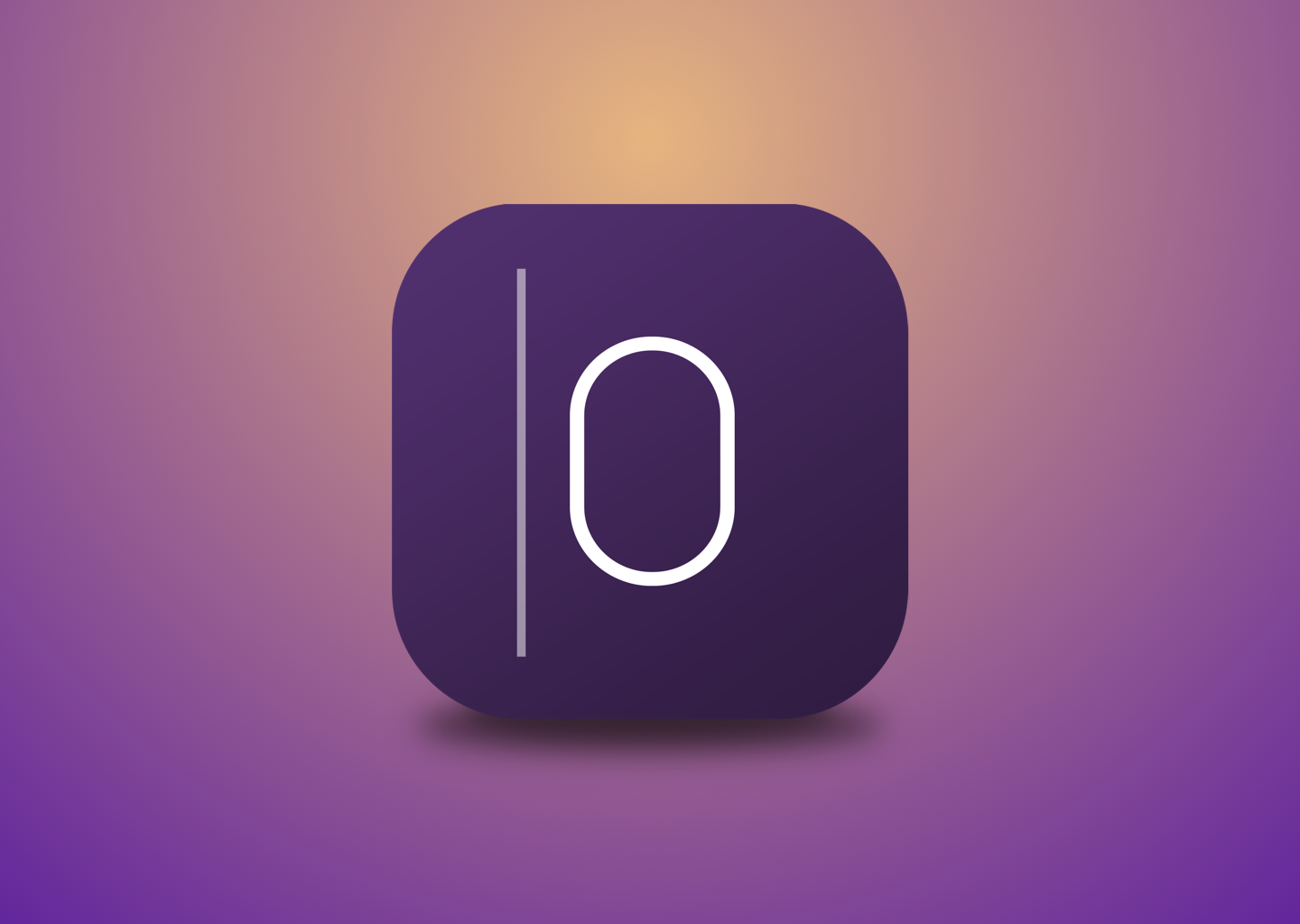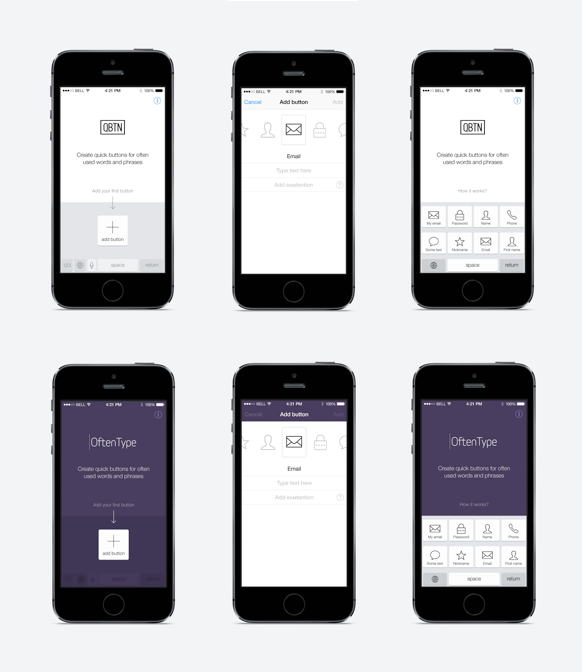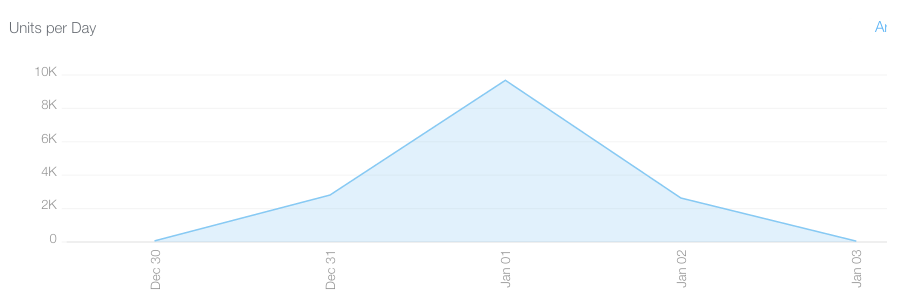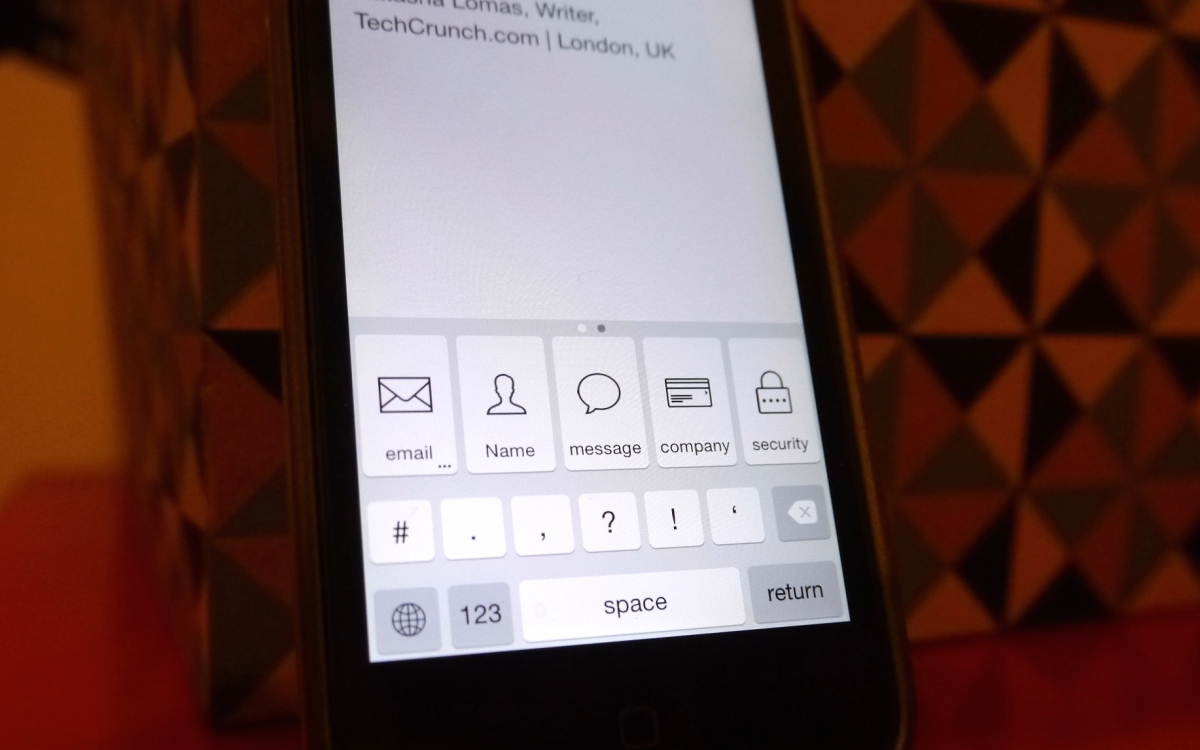iOS application - development, top App Store, Techcrunch and a grant from Facebook for $ 60,000 services
I already shared tips on developing a custom keyboard, as well as experience promoting the application before and immediately after release - an article . This time I want to talk about the development process and give a couple of tips on what to do after downloading the application in the App Store.

In my case, the type of insight that comes into the “prepared mind” has worked. The desire to make an application originated a long time ago, but the ideas that came to mind were too risky and complicated to implement. I was looking for the one with the appropriate ratio of resources needed for the implementation and the planned return.
You can certainly just wait and hope for a miracle, but it is better to try to bring this miracle closer. And the approach of a miracle, in my understanding, takes the form of a lengthy drawing - reading articles and books on the topic, tracking upstore tops, studying the market situation and trends that this market is moving towards.
Once again logging into a new application for studying the insides, I thought it would be nice to add the “email” and “password” buttons (instead of the stupid Emoji) to the keyboard and significantly simplify my life. Checked in the App Store and Google - there was nothing similar for iOS there. Eureka!!!
But, of course, everything could not be so simple ...
Next, you need to think about how our application will work. In my case, in addition to the application itself, I had to somehow supplement the keyboard with custom keys.
I began to look at how Emoji Upps are arranged. After installation, these applications added Emoji to the list of phone languages, and supplemented with a smiley standard keyboard. This principle of working through language layouts was quite suitable. So, as a result of the research, a concept was born - an application that adds an additional layout (like Emoji) to the keyboard, on which there are buttons with user-defined text content in the application itself.
We proceed to thinking through the interface. Web prototyping tools - a million. Articles where they are compared too. If you are not working in a graphical editor, start with paper and a pencil. Next is any free service or service with a trail period.
But this is only the first step. After you have made wireframes yourself, having put all your thoughts about the interface into the screens of the application, look for an experienced specialist. Let it be the rule - always involve a UX specialist to develop the interface. Whether it’s a website or an application, there are too many products created by programmers, managers, or people even farther from thinking of interfaces. Often a designer can also perform this function. But I recommend nevertheless to separate them. Thus, the designer and the UX-er will be able to challenge each other's decisions and find the truth.
Here is our example. First, the schemes that I drew (it seemed to me that everything was thought out), and what I got from the designer.

Here I can give 2 tips:
Hundreds of articles have also been written about the need for a good designer. Yes, for an iOS environment, look for a strong professional.
At first glance, in our case, the designer just had to “colorize” the fireframes, but in reality there are much more details. This and the correct grid, the calculation of the size of the elements, the creation of a set of icons, recommendations for animation, and some management decisions that "surfaced" during development.
Again, we had the task of making the interface and the layout itself as native as possible so that the user would not interrupt the experience of interacting with the iPhone keyboard. This requirement primarily concerned the keys themselves and the icons for them, but automatically extended to the rest of the interface to preserve the style.

In the picture there are 2 versions of the design - the first “as native as possible” and the second “let's add some color”.
The design is almost ready - go to the programmer. The first BIG problem will pop up. Only the programmer opened his eyes to the fact that in iOS at that time the keyboard was completely closed to external intervention.
It turns out that the developers of Emoji applications do not add any additional functions to the phone, since the layout with smiles is already built into iOS (somewhere from version 6 or even earlier). Many of these developers have earned dozens, or even hundreds of thousands of dollars, by correctly using the illiteracy of users. A great example of how to “saddle” a trend.
But back to the process of creating the app. The concept was invented, UX is ready, the design is in progress, but the keyboards are closed - the situation is not veryshit ...
I returned to the study. It is about January 2014, when there were not even rumors about iOS 8 and its innovations. I had to read everything I could find about custom keyboards in iOS. It turned out that the closed keyboard at that time was almost the main argument of Android supporters in the battle of platforms. I don’t know why, but between the lines I read that Apple will try to change this situation in the very near future.
So, I decided not to postpone the project - to continue to work as if the keyboards were open and monitor the situation.
A few months later, the announcement of iOS 8 came out and, finally, Apple officially announced the addition of custom keyboard functionality. Good news and proof of the correctness of our path.
Completely complete the application just before the New Year holidays from Apple employees (yes, yes, Apple also has holidays). They poured it into the gate, modified the application several times, and finally achieved approval.
You can read what we did immediately after the publication of the promotion application here .
In fact, getting into the top apps is easy, it's harder to stay there. On the first day, we were in first place in the Utilities category in Ukraine. At first it is inspiring, but then you look at the numbers and understand that there are only a few dozen downloads behind this. In addition, getting into the top of small countries gives practically no organic matter, so early euphoria passes quickly.
Especially if you have a paid application. With the Paid model, organics comes with great difficulty.
In total, we made our way to the top10 in 11 countries around the world. Of the richest - Spain, Italy, Holland, Denmark, Israel.
In the first place were in Spain and Ukraine.
All with zero investments, only thanks to free reviews on sites about applications and startups.
Tried and giveaway. In 3 days, when the application was free, we received almost 15,000 installations. The result was very pleasing, but when you return to the paid version, the earned place in the top is not saved for you.

I don’t know how this mechanism works for others, but after a price increase of about a day, the application generally dropped out of the tops and returned to the Paid-top to the previous positions (according to the analytic services SensorTower and AppAnnie).
Of the benefits - mainly, it is to increase knowledge about the application and the calculation of word of mouth in the future. Also, these jumps can raise you in the search results for keywords. But, in my opinion, you won’t earn big money for a paid model here.
Of course, the culmination of our progress was a review on Techcrunch. No wonder everyone rushes about with it - an article about OftenType received more than 400 reposts, and caused an additional wave of reviews on niche local resources.
Techcrunch does not lend itself to everyone. I needed 3 attempts to reach out to their journalists.

I can advise the following:
Well, for dessert - another usefulness.
FbStart is a little-known program for helping indie applications from Facebook.
Everything is very simple - you submit an application and after its consideration, you can receive a grant for the development of the product. There are 2 types of grants - for beginners (up to $ 20,000 in services) and for more advanced applications (up to $ 60,000).
The number is steep, but it’s not a cache, but the amount you can spend on Facebook services and partners (MailСhimp, Parse, Adobe and many others).
The most useful thing is a Facebook loan worth $ 2,500, which can be spent on advertising within social networks. network. I think that such assistance will not be superfluous to independent developers.
How is the selection and what criteria - I do not know. The only condition is that at the time of application submission the application must be already 30 days in the App Store.
Full list of partners and goodies:

Idea
In my case, the type of insight that comes into the “prepared mind” has worked. The desire to make an application originated a long time ago, but the ideas that came to mind were too risky and complicated to implement. I was looking for the one with the appropriate ratio of resources needed for the implementation and the planned return.
You can certainly just wait and hope for a miracle, but it is better to try to bring this miracle closer. And the approach of a miracle, in my understanding, takes the form of a lengthy drawing - reading articles and books on the topic, tracking upstore tops, studying the market situation and trends that this market is moving towards.
Once again logging into a new application for studying the insides, I thought it would be nice to add the “email” and “password” buttons (instead of the stupid Emoji) to the keyboard and significantly simplify my life. Checked in the App Store and Google - there was nothing similar for iOS there. Eureka!!!
But, of course, everything could not be so simple ...
Concept
Next, you need to think about how our application will work. In my case, in addition to the application itself, I had to somehow supplement the keyboard with custom keys.
I began to look at how Emoji Upps are arranged. After installation, these applications added Emoji to the list of phone languages, and supplemented with a smiley standard keyboard. This principle of working through language layouts was quite suitable. So, as a result of the research, a concept was born - an application that adds an additional layout (like Emoji) to the keyboard, on which there are buttons with user-defined text content in the application itself.
Ux
We proceed to thinking through the interface. Web prototyping tools - a million. Articles where they are compared too. If you are not working in a graphical editor, start with paper and a pencil. Next is any free service or service with a trail period.
But this is only the first step. After you have made wireframes yourself, having put all your thoughts about the interface into the screens of the application, look for an experienced specialist. Let it be the rule - always involve a UX specialist to develop the interface. Whether it’s a website or an application, there are too many products created by programmers, managers, or people even farther from thinking of interfaces. Often a designer can also perform this function. But I recommend nevertheless to separate them. Thus, the designer and the UX-er will be able to challenge each other's decisions and find the truth.
Here is our example. First, the schemes that I drew (it seemed to me that everything was thought out), and what I got from the designer.

Here I can give 2 tips:
- On the first screen of the application, try not to give the user a large selection. A few (or better one) button, which leads to the next action - ideal for a good conversion.
- Use native controls of that environment in which the application will work. I really liked the solution with a “carousel” when choosing an icon. Now it seems obvious, but this is the task of a good designer - the interface should be such that the question “could it have been any different?”
Another example - in the application itself, we duplicate the keyboard at the bottom of the screen. Although functional, this is not necessary, but it immediately helps to show the essence of the application using the iOS environment.
Design
Hundreds of articles have also been written about the need for a good designer. Yes, for an iOS environment, look for a strong professional.
At first glance, in our case, the designer just had to “colorize” the fireframes, but in reality there are much more details. This and the correct grid, the calculation of the size of the elements, the creation of a set of icons, recommendations for animation, and some management decisions that "surfaced" during development.
Again, we had the task of making the interface and the layout itself as native as possible so that the user would not interrupt the experience of interacting with the iPhone keyboard. This requirement primarily concerned the keys themselves and the icons for them, but automatically extended to the rest of the interface to preserve the style.

In the picture there are 2 versions of the design - the first “as native as possible” and the second “let's add some color”.
And here is the problem
The design is almost ready - go to the programmer. The first BIG problem will pop up. Only the programmer opened his eyes to the fact that in iOS at that time the keyboard was completely closed to external intervention.
It turns out that the developers of Emoji applications do not add any additional functions to the phone, since the layout with smiles is already built into iOS (somewhere from version 6 or even earlier). Many of these developers have earned dozens, or even hundreds of thousands of dollars, by correctly using the illiteracy of users. A great example of how to “saddle” a trend.
But back to the process of creating the app. The concept was invented, UX is ready, the design is in progress, but the keyboards are closed - the situation is not very
An attempt to predict the future
I returned to the study. It is about January 2014, when there were not even rumors about iOS 8 and its innovations. I had to read everything I could find about custom keyboards in iOS. It turned out that the closed keyboard at that time was almost the main argument of Android supporters in the battle of platforms. I don’t know why, but between the lines I read that Apple will try to change this situation in the very near future.
So, I decided not to postpone the project - to continue to work as if the keyboards were open and monitor the situation.
A few months later, the announcement of iOS 8 came out and, finally, Apple officially announced the addition of custom keyboard functionality. Good news and proof of the correctness of our path.
Completely complete the application just before the New Year holidays from Apple employees (yes, yes, Apple also has holidays). They poured it into the gate, modified the application several times, and finally achieved approval.
You can read what we did immediately after the publication of the promotion application here .
Top App Store
In fact, getting into the top apps is easy, it's harder to stay there. On the first day, we were in first place in the Utilities category in Ukraine. At first it is inspiring, but then you look at the numbers and understand that there are only a few dozen downloads behind this. In addition, getting into the top of small countries gives practically no organic matter, so early euphoria passes quickly.
Especially if you have a paid application. With the Paid model, organics comes with great difficulty.
In total, we made our way to the top10 in 11 countries around the world. Of the richest - Spain, Italy, Holland, Denmark, Israel.
In the first place were in Spain and Ukraine.
All with zero investments, only thanks to free reviews on sites about applications and startups.
Price Drop
Tried and giveaway. In 3 days, when the application was free, we received almost 15,000 installations. The result was very pleasing, but when you return to the paid version, the earned place in the top is not saved for you.

I don’t know how this mechanism works for others, but after a price increase of about a day, the application generally dropped out of the tops and returned to the Paid-top to the previous positions (according to the analytic services SensorTower and AppAnnie).
Of the benefits - mainly, it is to increase knowledge about the application and the calculation of word of mouth in the future. Also, these jumps can raise you in the search results for keywords. But, in my opinion, you won’t earn big money for a paid model here.
Techcrunch
Of course, the culmination of our progress was a review on Techcrunch. No wonder everyone rushes about with it - an article about OftenType received more than 400 reposts, and caused an additional wave of reviews on niche local resources.
Techcrunch does not lend itself to everyone. I needed 3 attempts to reach out to their journalists.
- The first time I wrote to a journalist was a few days before the release. The authors of such large resources like to be the first, and you can play on it. He described the application in a few words, specifying that this is my first press appeal, and dropped the link to the video. My surprise knew no bounds when, literally a few minutes later, the answer came: “This is pretty cool, but surely there are other similar keyboards, no?”. I replied that yes, there are other solutions to this problem, but we are the first to use this concept of keyboard shortcuts. On this, our dialogue subsided.
- Then, several times I sent a letter with the release anos to various authors, but they also remained unanswered.
- A month after the release, I noticed a review of the content of a simple keyboard app on the site and decided, if they did, it was worth trying again. I found the contact of the journalist who reviewed and wrote to her on Twitter, asking if she would like to receive a promotional code for my application, since she was interested in the topic of iOS keyboards. She replied - they say, not a question.
I sent the code and materials about the application by mail and started to wait. Several days passed, and there was no answer again. I thought it didn’t work again. He began to analyze what needs to be done in the following updates in order to finally succeed.
And suddenly - a treasured letter came! First, please send another promo code, then - questions about the application.
In general, the publication did take place. As a result, an article on Techcrunch gave a wave of shares in the social. networks and additional reviews. One of them on the Spanish site Applesfera allowed to reach the 1st place in Spain. In just a few days, when the hype from the article lasted, we received about 1000 paid downloads. Our application is designed for a rather narrow niche, plus a paid-model, so with other introductory figures these figures can be many times better.

I can advise the following:
- Look for a journalist who writes on your topic and try to find out about his preferences as much as possible.
- Find the “triggers” with which you can hook the author - exclusive, first press contact, interesting topic for him, etc.
- Twitter works well for the first contact. The main thing is to conduct a preliminary research and find the right “clue”.
- The descriptions of the application for journalists should be as concise as possible, if they are interested, they will find all the necessary information or ask you. This is their job.
- Link to all Techcrunch journalists' contacts - thecrowdfundamentals.com/tech-crunch-shares-staff-email-addresses/
Facebook grant
Well, for dessert - another usefulness.
FbStart is a little-known program for helping indie applications from Facebook.
Everything is very simple - you submit an application and after its consideration, you can receive a grant for the development of the product. There are 2 types of grants - for beginners (up to $ 20,000 in services) and for more advanced applications (up to $ 60,000).
The number is steep, but it’s not a cache, but the amount you can spend on Facebook services and partners (MailСhimp, Parse, Adobe and many others).
The most useful thing is a Facebook loan worth $ 2,500, which can be spent on advertising within social networks. network. I think that such assistance will not be superfluous to independent developers.
How is the selection and what criteria - I do not know. The only condition is that at the time of application submission the application must be already 30 days in the App Store.
Full list of partners and goodies:
Facebook - $ 2,500 ad credit for new spenders
Preferred Marketing Developer Program
Parse - $ 20,000 mobile app platform credit
Adobe - 1 license per company for Adobe Creative Cloud suite of creative tools and services
Appurify - 60 hours on-device of Appurify robot for mobile app testing and 10 licenses for on-device testing
Asana - Premium plan (50 members) for task tracking and project management
Bluejeans - Unlimited videoconferencing calls for up to 50 accounts per company
Desk.com - Up to 10 agents on Standard plan for customer care application
MailChimp - Email marketing support for up to 4.4 million emails per month
Proto.io - Agency plan (5 users, 15 active projects) for mobile app prototyping
Quip - Quip Business plan (document sharing with unlimited number of users)
SurveyMonkey - Gold plan (unlimited online survey questions)
UserTesting - 10 credits for remote usability and UX testing
Workable - Standard plan (5 active job listings) for recruiting
Transifex - Premium plan for app localization
HootSuite - HootSuite Pro, social media management SAAS platform
Appmethod - Individual plan for building Android and iOS apps 3 months
Braintree
Get Satisfaction - Professional plan
Stripe
